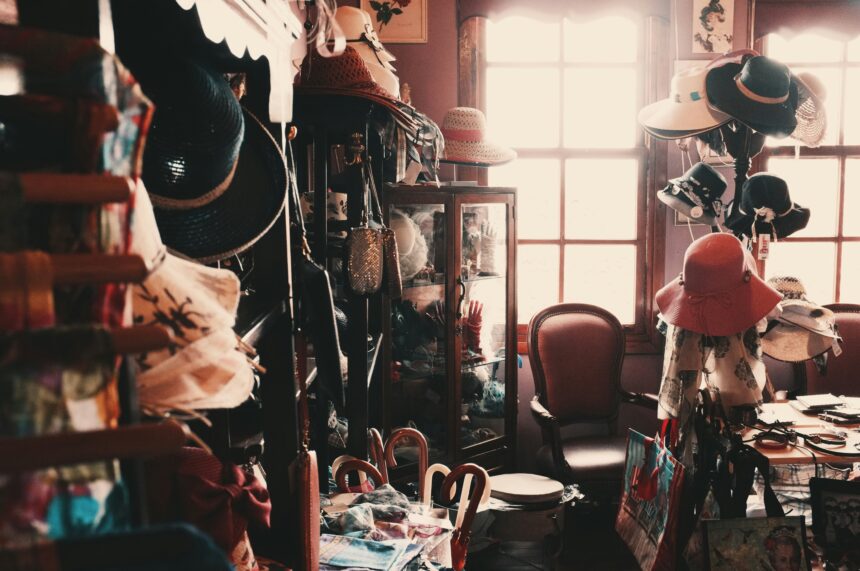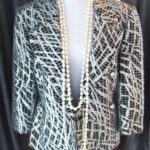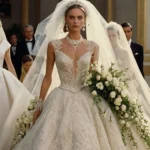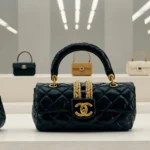Introduction: The Relevance of Vintage Fashion Today
Vintage fashion has become increasingly popular in recent years, with fashion enthusiasts and trendsetters alike turning to vintage pieces to add a unique and timeless touch to their wardrobes. But what is it about vintage fashion that has captured our attention and continues to be relevant today?
Perhaps it’s the history and nostalgia that vintage pieces evoke, or the craftsmanship and attention to detail that is often lacking in modern fast fashion. Or maybe it’s the fact that vintage fashion allows us to make a statement and express our individuality in a world where mass-produced clothing dominates.
The Early 20th Century: The Birth of Vintage Fashion
The early 20th century saw the birth of modern fashion as we know it, with designers like Christian Dior, Coco Chanel, and Yves Saint Laurent revolutionizing the industry with their innovative designs and bold statements.
During this time, fashion began to move away from the restrictive and ornate styles of the Victorian era, and towards more practical and streamlined designs. Women began to wear shorter skirts and looser clothing, reflecting the changing social attitudes of the time.
The Roaring Twenties: Flapper Dresses and Art Deco Style
The 1920s, also known as the Roaring Twenties, were a time of social and cultural upheaval, and fashion was no exception. The flapper dress became a symbol of the era, with its loose, straight silhouette and shorter hemline.
Art Deco style also emerged during this time, characterized by geometric shapes, bold colors, and intricate patterns. Designers like Givenchy, Balenciaga, and Valentino embraced this style, creating elegant and sophisticated designs that are still coveted today.
The Glamorous 1930s: Bias Cut Gowns and Hollywood Style
The 1930s were a time of glamour and sophistication, with Hollywood stars like Greta Garbo and Marlene Dietrich setting the standard for fashion and style. Bias cut gowns became popular during this time, emphasizing a woman’s curves and creating a sleek and elegant silhouette.
Designers like Hubert de Givenchy, Jeanne Lanvin, and Elsa Schiaparelli embraced this style, creating stunning designs that were both timeless and modern.
The 1940s: Utility Fashion and the Impact of World War II
The 1940s were a time of great social and political upheaval, with World War II having a profound impact on fashion and style. Utility fashion emerged during this time, with clothing designed to be practical and functional rather than fashionable.
Despite this, designers like Norman Hartnell and Christian Lacroix continued to create beautiful and elegant designs that provided a much-needed escape from the harsh realities of war.
The 1950s: The Golden Age of Vintage Fashion
The 1950s are often referred to as the golden age of vintage fashion, with designers like Charles James and Madame Grès creating iconic designs that continue to inspire fashion today.
The hourglass silhouette became popular during this time, with fitted bodices and full skirts emphasizing a woman’s curves. Bold colors and prints also emerged, reflecting the optimism and prosperity of the post-war era.
The Swinging Sixties: Mod Fashion and Youth Culture
The 1960s were a time of cultural revolution and social change, with youth culture and mod fashion emerging as dominant trends. Designers like Christian Dior and Coco Chanel continued to influence fashion, but new designers like Mary Quant and André Courrèges also made their mark with their bold and innovative designs.
The mini skirt became a symbol of the era, reflecting the changing attitudes towards sexuality and femininity. Bold colors, psychedelic prints, and futuristic designs also emerged, reflecting the optimism and excitement of the time.
The 1970s: Hippie Fashion and Disco Style
The 1970s were a time of counterculture and rebellion, with hippie fashion and disco style dominating the fashion scene. Bold and colorful prints, flowing fabrics, and bohemian styles became popular, reflecting the changing social and political attitudes of the era.
Designers like Yves Saint Laurent and Valentino continued to create elegant and sophisticated designs, while new designers like Diane von Furstenberg and Halston embraced the disco style with their sexy and glamorous designs.
The 1980s: Power Dressing and Bold Statements
The 1980s were a time of excess and extravagance, with power dressing and bold statements dominating the fashion scene. Shoulder pads, bold colors, and shiny fabrics became popular, reflecting the confidence and ambition of the era.
Designers like Christian Dior and Valentino continued to create elegant and sophisticated designs, while new designers like Thierry Mugler and Jean Paul Gaultier embraced the bold and avant-garde styles of the decade.
The 1990s and Beyond: Vintage Revival and Sustainable Fashion
The 1990s saw a revival of vintage fashion, with designers and fashion enthusiasts alike turning to vintage pieces for inspiration and style. Sustainable fashion also emerged during this time, with designers like Stella McCartney and Vivienne Westwood leading the way with their eco-friendly and ethical designs.
Today, vintage fashion continues to be relevant and timeless, with designers and fashion enthusiasts alike embracing the unique and timeless qualities of vintage pieces. From the birth of modern fashion in the early 20th century to the sustainable fashion movement of today, the evolution of vintage fashion is a testament to its enduring appeal and relevance.












